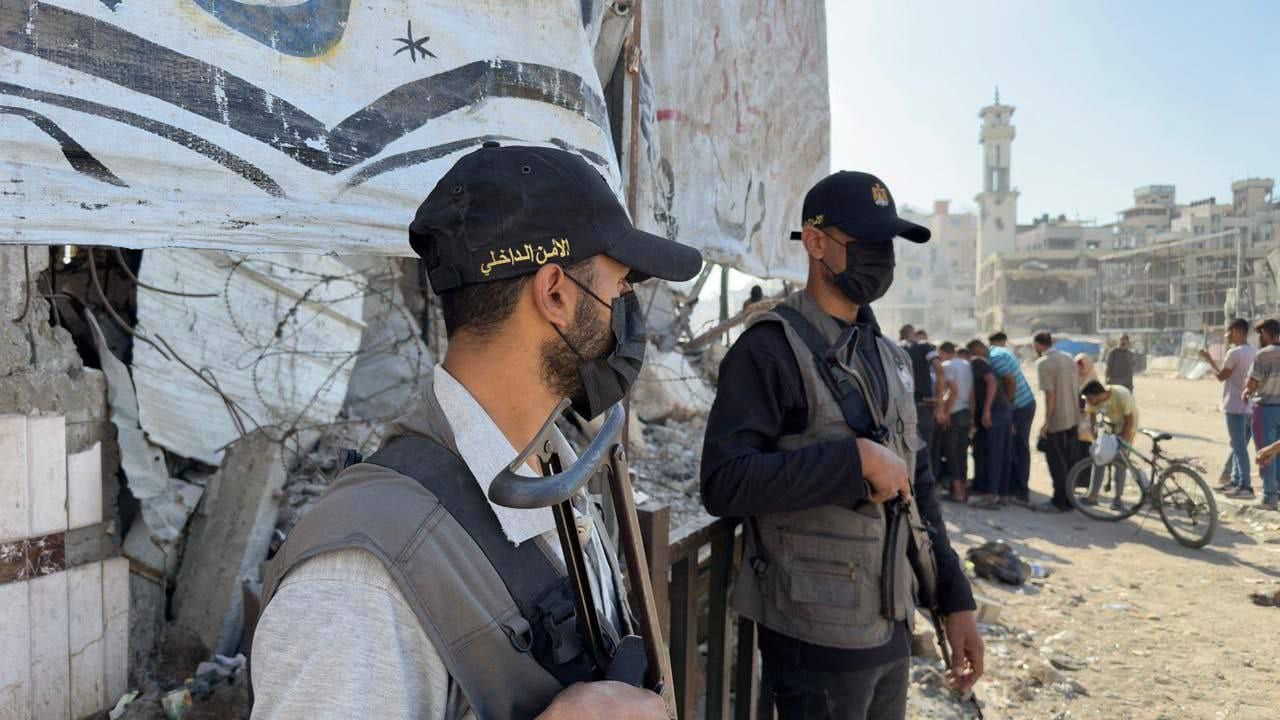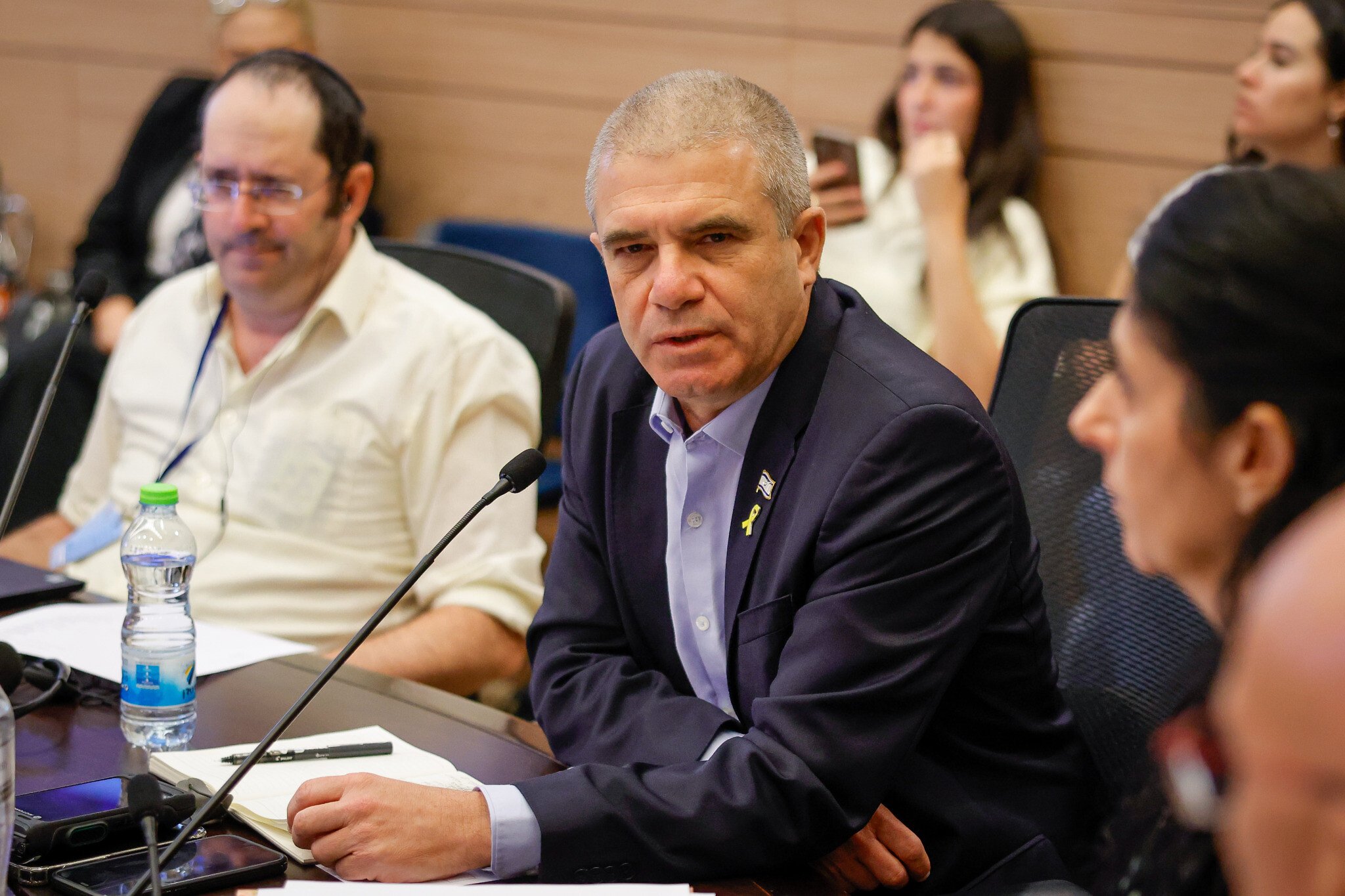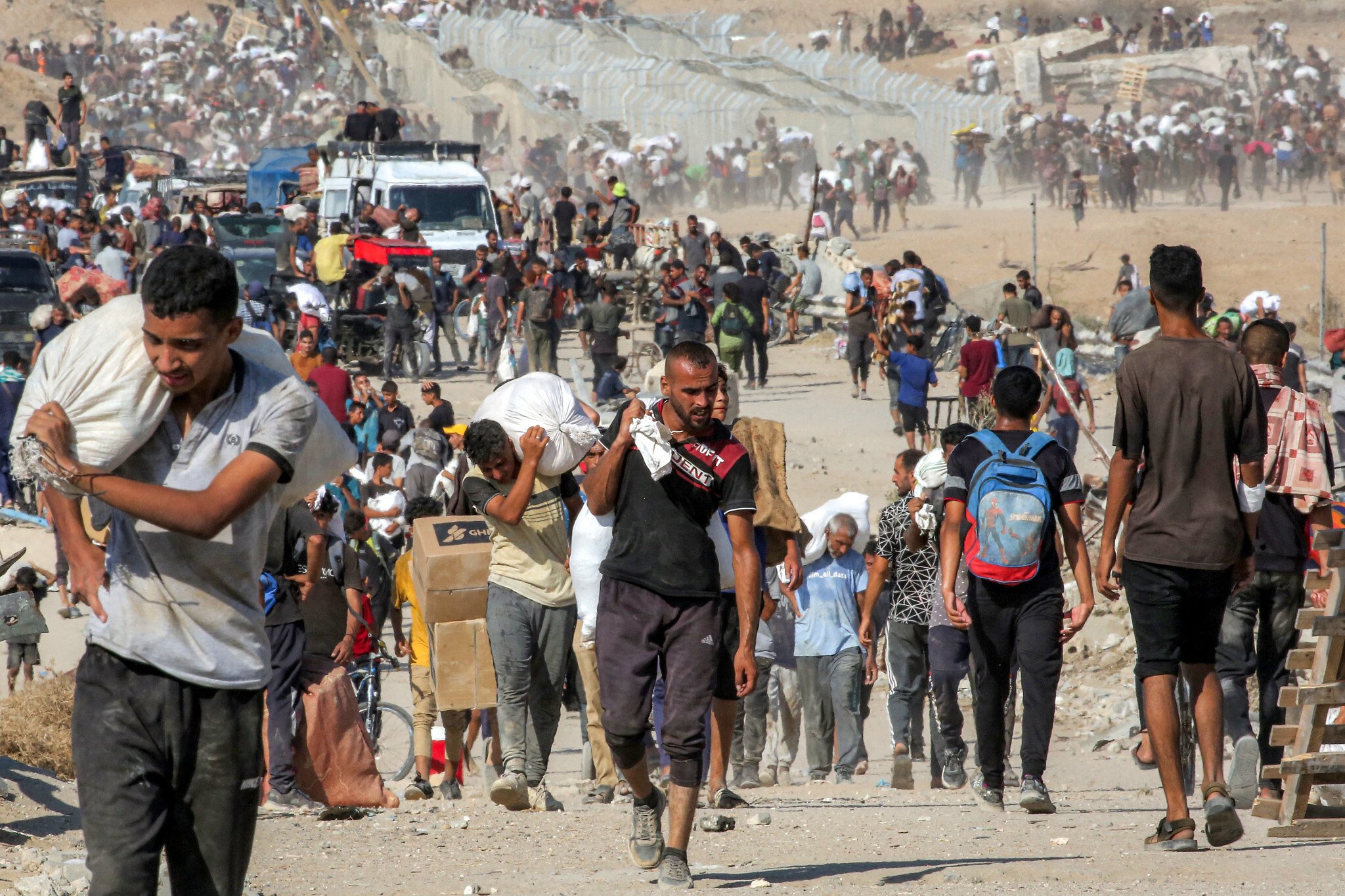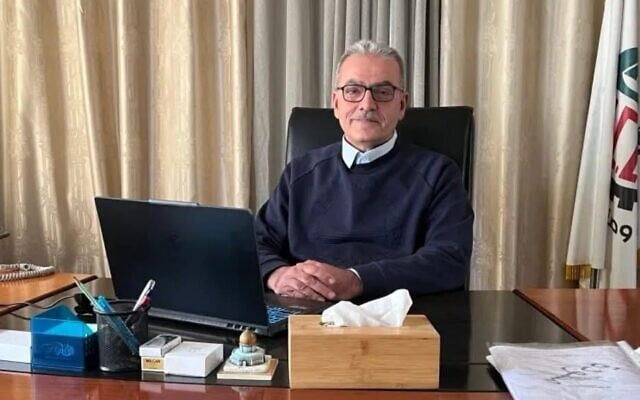


Operatives belonging to Hamas’s internal security apparatus tasked with maintaining order within the Strip have made their first public appearance just hours after a ceasefire in Gaza came into effect, footage released by Hamas-affiliated media on Friday showed.
The footage only showed a handful of gunmen, and it’s unclear whether there are even any additional ones beyond those photographed.
But the deployment and its publication appeared aimed at demonstrating that Hamas remains the most dominant force in Gaza, even if severely battered after two years of war.
It appeared to be the first appearance of internal security officers since the previous ceasefire deal was reached in January.
While Hamas has agreed to release the remaining 48 hostages early next week, it has pushed back on subsequent elements of the US plan for ending the war, which have been put off for subsequent negotiations after the hostage-prisoner swap is completed.
Those include its disarmament and its exclusion from any role in the post-war management of Gaza. Hamas has insisted on keeping at least some of its weapons, so long as the broader conflict with Israel is ongoing.
While it has agreed to cede control over the governance of Gaza to an independent committee of Palestinian technocrats, it insists on remaining part of the Palestinian national political dialogue.
The remnants of Hamas’s military force on display Friday highlight why some of Prime Minister Benjamin Netanyahu’s far-right coalition partners oppose the deal inked on Thursday to end the war in Gaza.
Yet-to-be-agreed-upon parts of the plan do envision the decommissioning of Hamas’s weapons and the demilitarization of the Gaza Strip, and Netanyahu has asserted that Israel will resume fighting if those elements aren’t implemented.
In the meantime, Israel has managed to remain in control of over 50% of the Gaza Strip even after its initial pull-back earlier Friday. The IDF will remain in those positions even after all of the hostages are released next week, while further withdrawals will be tied to Hamas’s disarmament and the establishment of an international stabilization force, which could take months to set up.
The renewed visibility of Hamas’ security forces came amid a rare public show of gratitude from Gaza’s civilian leadership.
A group of local officials led by Iyad Abu Ramadan, head of the Gaza Chamber of Commerce, sent a letter on Friday to US President Trump, thanking him for bringing about the end of the war in Gaza and inviting him to visit the Strip.
The letter, which was obtained by The Times of Israel, states: “We wish to express our sincere gratitude for your leadership and unwavering commitment to ending the war in Gaza… Your efforts have restored to us the most vital thing — hope.”
“We wish to express our sincere gratitude for your leadership and unwavering commitment to ending the war in Gaza… Your efforts have restored to us the most vital thing — hope,” the letter said.
Among those who signed on to the letter were Yahya al-Sarraj, the mayor of Gaza City; economist Soufian Odeh; and other business and academic figures.
The officials call not only for the reconstruction of the Strip, but also for the establishment of an independent Palestinian state in line with UN resolutions.
In the letter, the officials invite Trump to visit the Gaza Strip, writing: “We would be deeply honored to welcome you to Gaza to witness firsthand the resilience of our people and the renewal your leadership has helped make possible.”
Meanwhile, in Israel, authorities were preparing for the release of the remaining 48 hostages early next week.
Under the ceasefire agreement, Hamas will release all remaining hostages, living or dead, by Monday in exchange for 250 Palestinian security prisoners and 1,700 Gazan detainees.
Israel currently believes that Hamas may release all remaining hostages earlier than previously expected, according to reports in Hebrew media, with some saying the release could take place on Sunday, rather than Monday.
US President Donald Trump first told hostage families that all of the captives would be released on Monday, but he later told reporters it might not happen until Tuesday.
“It could happen any day now from this moment on,” a senior Israeli official said. The official noted, however, that there has been no confirmation that Hamas will release hostages before Monday.
Israel has demanded that all hostages be released in one phase. Still, it is prepared for the possibility that the release could occur in multiple stages.
However, if Hamas does not release all the hostages by noon on Monday, Israel will consider it a violation of the ceasefire agreement and respond in kind.
Hamas has told mediators that it may not be able to retrieve all of the bodies of hostages, as some of the fighters who knew where they were buried were killed in the war.
The deal, inked Thursday, establishes a multinational task force aimed at helping locate all of the hostages’ remains, and the text appears to recognize that the process could take time, but it’s unclear how Israel will react if some of the bodies are not returned by Monday and whether the mediators will hold Jerusalem accountable for implementing subsequent phases of the deal if so.
According to the Prime Minister’s Office, government hostage pointman Gal Hirsch spoke with the head of the Red Cross in Israel, Julien Lerisson, on Friday to coordinate reception and care for the returning hostages.
Additionally, the IDF expanded its Re’im base facility to handle initial physical and mental health checks and family reunions for the released hostages. Those needing urgent medical care will be airlifted directly to hospitals such as Soroka in Beersheba.

Meanwhile, the bodies of slain hostages are expected to be received by troops in Gaza, where a small ceremony, led by a military rabbi, will be held in their honor. They will then be taken to be identified by forensic experts.
Although previous hostage-release deals followed similar procedures, next week’s exchange is the largest to date, demanding more extensive planning.
Humanitarian agencies warn about post-ceasefire complacency
Following the ceasefire announcement, international organizations have continued to highlight Gaza’s humanitarian crisis.
The United Nations Children’s Fund (UNICEF) called for all food aid crossings in the enclave to be opened, warning that children are especially vulnerable after long periods without proper nutrition.
“We risk seeing a massive spike in child death, not only neonatal, but also infants, given their immune systems are more compromised than ever before,” said UNICEF spokesperson Ricardo Pires.

Children’s immunity is low because “they haven’t been eating properly and recently at all for way too long”, he said.
The United Nations plans to ramp up its delivery of humanitarian aid to Gaza, where some areas are experiencing famine, in the first 60 days of a ceasefire in the enclave, a top UN official said on Thursday.
“Under the ceasefire arrangement, we will have more than 145 community distribution points, in addition to up to 30 bakeries and all of our nutrition sites,” Ross Smith, WFP Director of Emergencies, told Reuters on Friday.
According to a Hamas source who spoke to AFP, a daily minimum of 400 trucks of aid will enter the Gaza Strip for the first five days of the ceasefire, to be increased in the following days.
Throughout the conflict, Israel has faced international scrutiny over allegations that its blockade and military operations in Gaza were causing mass starvation. Israeli officials have consistently rejected these claims, describing them as “modern blood libel” and “lies,” while emphasizing that “Israel does not have a policy of starvation.”



